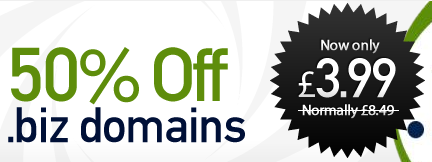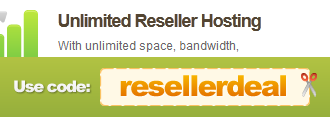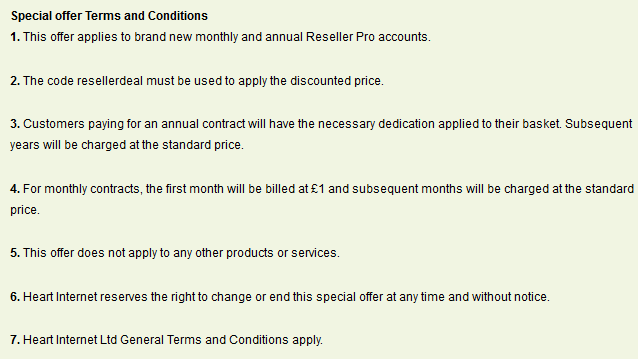Sales and discounts are a great way to attract new web hosting customers, and with a bit of planning and marketing you can see a big difference in orders. Price promotions are ideal for all kinds of reseller hosting businesses, whether you’ve been established for years or you’re just starting out. Read on for our top tips and tricks, as well as common mistakes to avoid.
Questions to ask
Before you start, you need to ask yourself the following:
Why do I want to run a price promotion?
How will I decide on what the promotion is?
How will I implement the promotion?
How will I market it?
How long will the promotion last?
How will I measure how successful it is?
The most important question to ask is why you want to run a promotion. Clarifying your aims and objectives from the start is essential for an effective promotion, and it’s best to be quite specific. The most obvious answer is ‘To attract more customers and make more sales’, but what kind of customers are you hoping to attract? What do you want them to buy? Do you have any targets (in terms of number of sales or revenue) that you want to reach? The answers to these questions will help you determine how you market your promotion as well as helping you make other crucial decisions (such as those outlined by the other questions above).
Types of discounts
Some of the most common types of hosting and domain related discounts are formats such as:
• 20% off
• 2 months free
• £1 for the first month
• Buy X and get Y free (or discounted)
There’s no one strict rule for this one; it’s best to do some experimenting and see which work well for you. Don’t forget that other variables – such as the product/service being discounted – play a part too, so be wary of making too many sweeping judgements.
If you combine web hosting with other services, such as web design or website maintenance, then ‘Buy X and get Y free/discounted’ can make very effective bundles, for example ‘Get 10% off our site maintenance service when you buy your web hosting with us’ or vice versa. As a reseller, you can simply check a box to offer your customers a free domain name with their hosting when you’re setting up packages.
Long term vs. short term promotions
Both have their advantages and disadvantages. For example, customers may become complacent about seeing the same offer for several months, whilst a short term offer can encourage people to act quickly to avoid missing out. Short term promotions offer more opportunity for impressive discounts, but will also be seen by far fewer people than a longer running deal. A mix of both long and short term offers works well – anything from a few hours to several months means you are more likely to have something to suit everyone.
Existing customers vs. new customers
From a business perspective, it usually makes more sense to target new customers with promotions which act as a strong incentive often accompanied by a higher spend. However, it’s important to provide a range of promotions for existing customers too – promotions can help you retain customers just as effectively as acquiring new ones, and they’re a great way to reward loyalty and set yourself apart from businesses who just target new accounts. Take a look at our blog post on cross-selling and upselling for ideas.

Loss-leader promotions
Believe it or not, it can sometimes make sense to break even or even absorb a loss from your promotions (or parts of them). The trick is to use products with small margins, like domain names, to sell other more profitable products and services, such as web hosting. Check out Why domain names are your baked beans for more details.
Discount codes
One of the most efficient ways to implement a price promotion is by using discount codes. It’s less confusing for customers than you manually adjusting the price, and it also encourages people to share your discounts across the web. Keep codes short and simple so they are memorable and easy to share on social networks with character limitations. It’s often more effective to use complete words rather than seemingly random letters and numbers.
If you’re a HostPay user, you can set up discount codes quickly and easily. You may find the following wiki articles useful: Discount Codes and Template Variables.
Common pitfalls
• Try to make your promotion as simple as possible. If it has so many clauses it gets confusing, you’ll turn potential customers away. Keep any rules and exceptions to the terms and conditions rather than integrating them as part of the deal.
• Make sure your pricing offers aren’t so low they’re unsustainable or harming your business. When you’re first starting out, it’s tempting to have crazy deals to get noticed, but plan for the future as well. Customers will not be happy if they’re facing large unexpected renewal prices further down the line; it’s just as important to retain customers as it is to acquire them.
• Ensure your promotion is worthwhile. Work out what your profit will be if you make 5 sales, 10 sales, 100 sales and so on. If you have figures already, you may want to work out the customer’s lifetime value or projected spend over a specific length of time. In your profit calculations, remember to factor in the *time* you spend on the promotion and any consquential actions (such as setting products/services up for customers or moving/upgrading).
• Make sure your customers understand the service/product they’re buying and what’s included in the price to help prevent confusion and cancellations.
• Remember to include terms and conditions explaining everything in-depth. Depending on how you intend to promote your offer, it may be better to have them on a separate page and link to them accordingly.
Promoting your offers
There are numerous ways you can promote your discounts – social media, email newsletters, forums and deal websites are generally the cheapest, although PPC and Facebook advertising (take a look at A step by step guide to creating a successful Facebook advertising campaign) can work quite well if you have the budget. If you email customers for other reasons, such as support, it’s a good idea to amend your email signature to promote your most important offer. When running long-term offers, it can also be worth creating (or amending) leaflets, business cards and similar print products – but have a strategy in mind before you spend money on printing, or you run the risk of having lots of wastage.
Where you promote your offers will also depend on whether you’re targeting new or existing customers (or both). If you already have a strong client base, newsletters are a great way to target people; for example, you may want to email just your business users with an upsell deal on SSL certificates.
The imagery you’ll want obviously depends on how you plan to promote your offers, but it’s essential to have something you can easily edit that is also easily adaptable to a variety of formats, both online and offline. Specific discounts are much more effective then more general statements (such as ‘Like us on Facebook for offers and deals’), so always say exactly what the promotion is in your imagery and posts.

Measuring success
Again, this will come down to where you choose to promote your offers, but you’ll still want to back them up with Google Analytics – check out this set of handy articles on conversions, and also check out page views and bounce rates. You may also want to consider:
• Your own sales reports (including the number of discount codes used/sales made at your offer price).
• Facebook (and other advertising channels’) statistics.
• Heatmapping tools (before and during your campaign).
Using these you can pull out information such as the number of customers gained, profit and so on. Ideally you want to compare these stats across different campaigns and use extra knowledge (such as that from heatmapping tools) to refine and build on your success. With so many variables involved, it’s best to run several campaigns with different variables to get a better idea of what’s more successful for you.
When you’re running your first promotion there’s a lot to think about, but after you have a few under your belt you’ll find the process is a lot smoother and faster as it becomes second nature.
What are your top tips for running promotions? Let us know in the comments!



Comments
Please remember that all comments are moderated and any links you paste in your comment will remain as plain text. If your comment looks like spam it will be deleted. We're looking forward to answering your questions and hearing your comments and opinions!